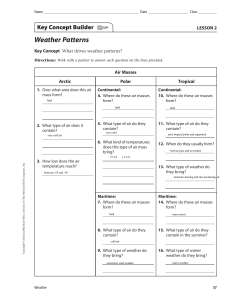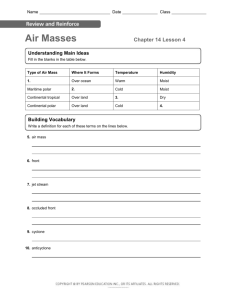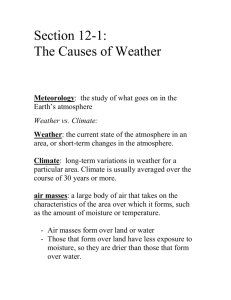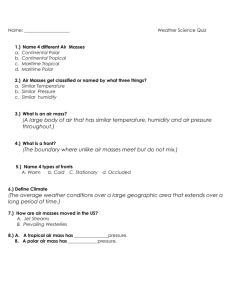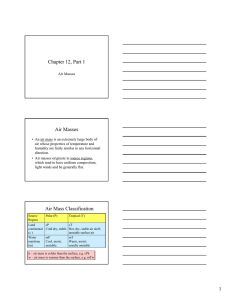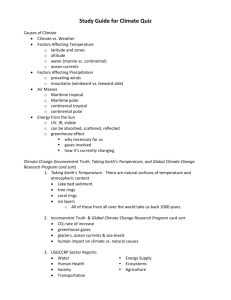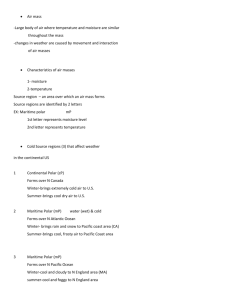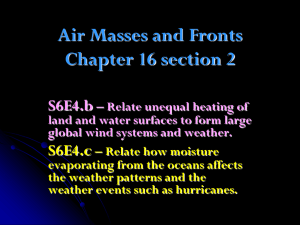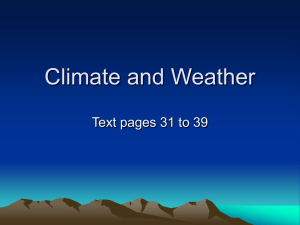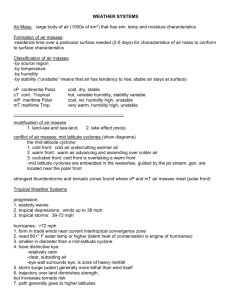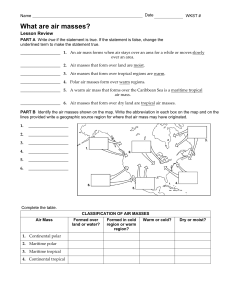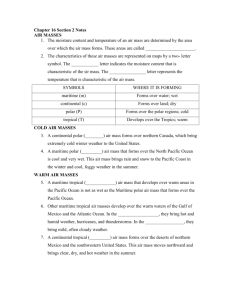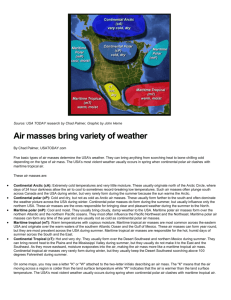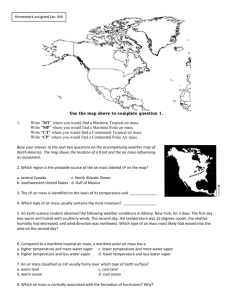Weather- Air Masses Webquest 2015
advertisement
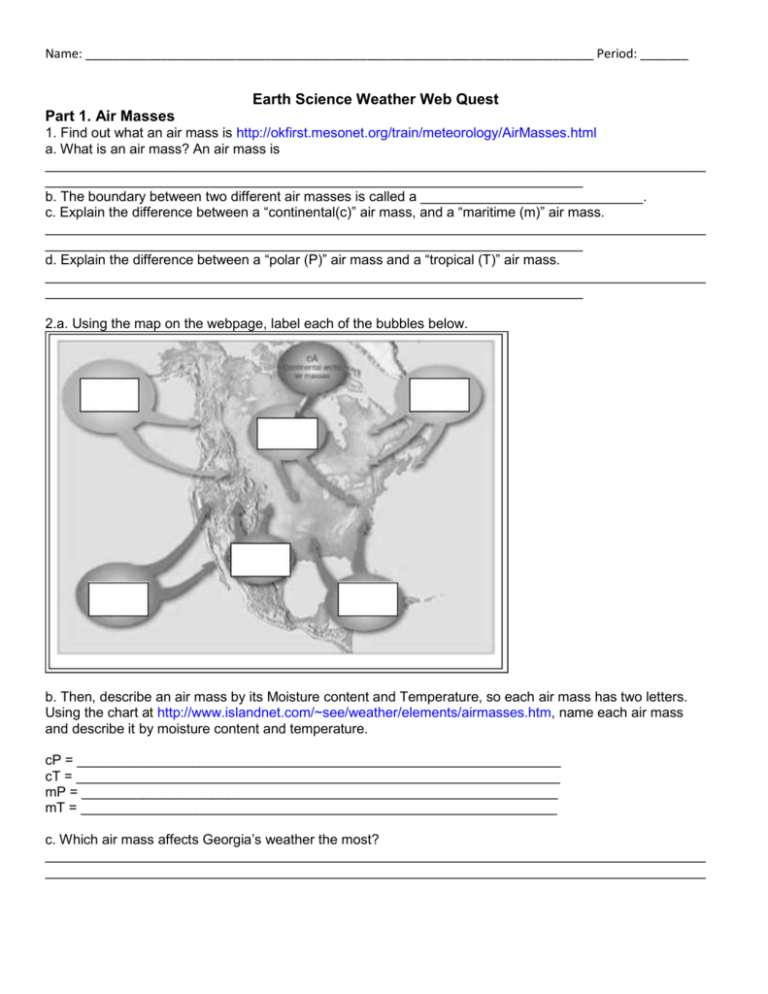
Name: __________________________________________________________________________ Period: _______ Earth Science Weather Web Quest Part 1. Air Masses 1. Find out what an air mass is http://okfirst.mesonet.org/train/meteorology/AirMasses.html a. What is an air mass? An air mass is ______________________________________________________________________________________ ______________________________________________________________________ b. The boundary between two different air masses is called a _____________________________. c. Explain the difference between a “continental(c)” air mass, and a “maritime (m)” air mass. ______________________________________________________________________________________ ______________________________________________________________________ d. Explain the difference between a “polar (P)” air mass and a “tropical (T)” air mass. ______________________________________________________________________________________ ______________________________________________________________________ 2.a. Using the map on the webpage, label each of the bubbles below. b. Then, describe an air mass by its Moisture content and Temperature, so each air mass has two letters. Using the chart at http://www.islandnet.com/~see/weather/elements/airmasses.htm, name each air mass and describe it by moisture content and temperature. cP = _______________________________________________________________ cT = _______________________________________________________________ mP = ______________________________________________________________ mT = ______________________________________________________________ c. Which air mass affects Georgia’s weather the most? ______________________________________________________________________________________ ______________________________________________________________________________________ Name: __________________________________________________________________________ Period: _______ Air Masses and Fronts Worksheet Formation of Air Masses An air mass will form when air sits over an area for a long period of time. The air mass will take on the same characteristics as the surface beneath. Therefore an air mass sitting over tropical waters will become warm and moist. This type of air mass is called Maritime Tropical (mT). An air mass developing over a cold land area is called Continental Polar (cP) and is cold and dry. A Maritime Polar (mP) air mass becomes cold and moist because it forms over cold water and a Continental Tropical air mass is warm and dry, forming over warm land. Figure 1 shows where these air masses might develop. The actual temperature and moisture content of these air masses can always vary according to the season and the length of time spent over and area, but they always have these characteristics relative to other air masses. Match the air masses to their characteristic (each letter is used twice): Air Mass Letter Characteristic Dry and warm A. Maritime Tropical (mT) Moist and cold Moist and warm B. Continental Tropical (cT) Dry and cold Forms over warm land C. Continental Polar (cP) Forms over warm water Forms over cold water D. Maritime Polar Forms over cold land Air Masses Label the air masses below and give a brief characteristic of each air mass.
